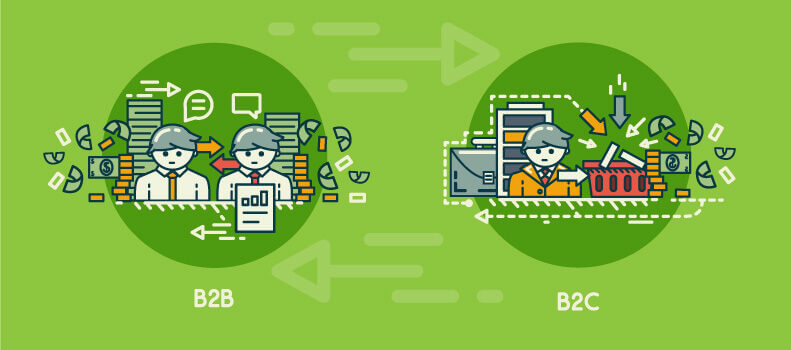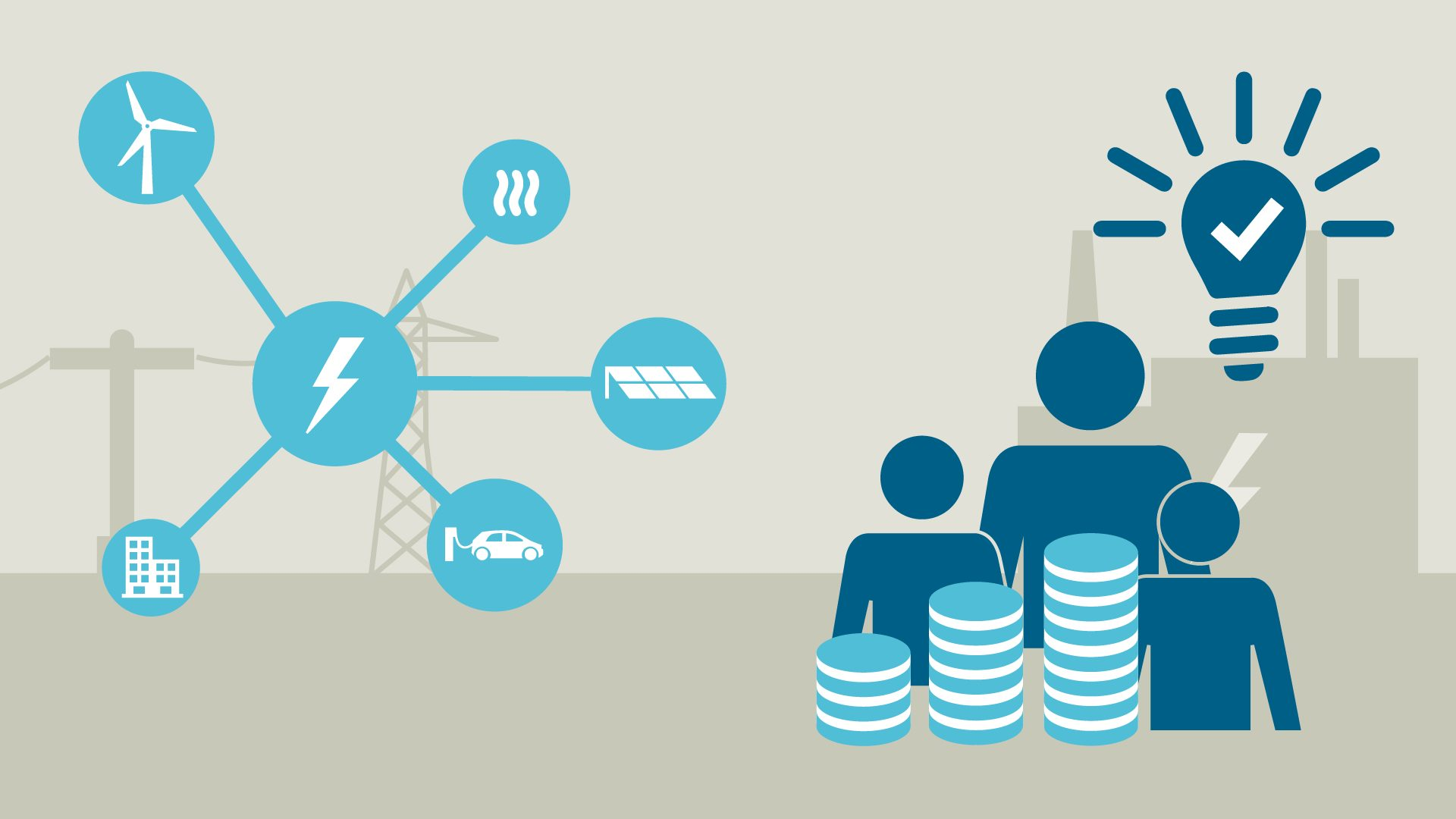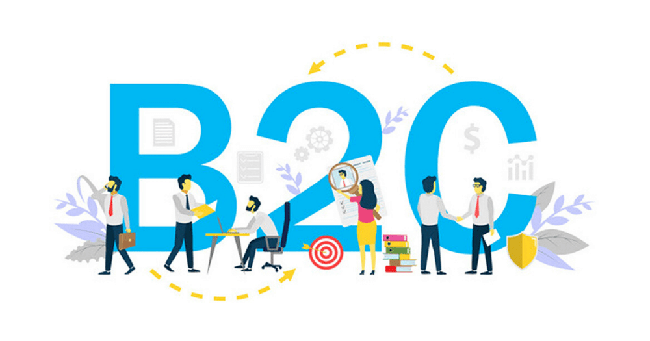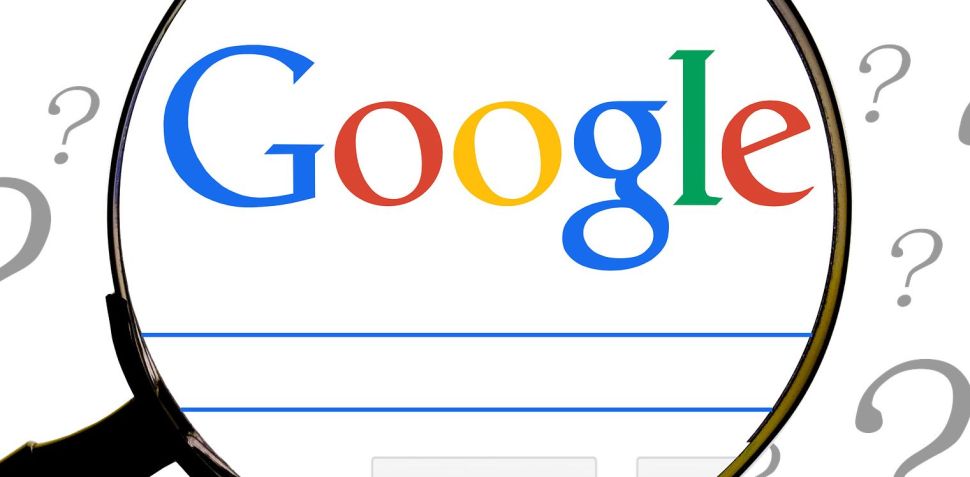Business-to-consumer marketing, or B2Cmarketing, refers to the techniques and strategies used by a corporation to promote its products and services to individual individuals, including the creation, advertising, and sale of items for customers to use in their daily life.
There are several distinctions between B2C and B2B marketing. The purchasing and sales processes, decision-makers engaged, and purchase costs are some of the most noteworthy distinctions.
While a company would almost certainly undertake considerable study before investing in new software, office space, or a big purchase with another company, B2C transactions are often more spontaneous and immediate.
Consumers typically seek out goods and services based on an urgent need and make purchases with less study and due diligence than a corporation would. As a result, B2C marketers have a significantly narrower window of opportunity to influence consumer behavior.
As a result, successful B2C marketing usually elicits emotional emotions or responses, whereas successful B2B efforts focus on providing instant value. Understanding these distinctions and making the necessary modifications to your marketing approach will enhance your results.
Businesses that focus on B2C marketing constantly track trends, analyze their consumers' purchasing patterns, and closely watch their competitors' methods, as knowing the challenges—and understanding how tobreak through all the noise to achieve success—is key.
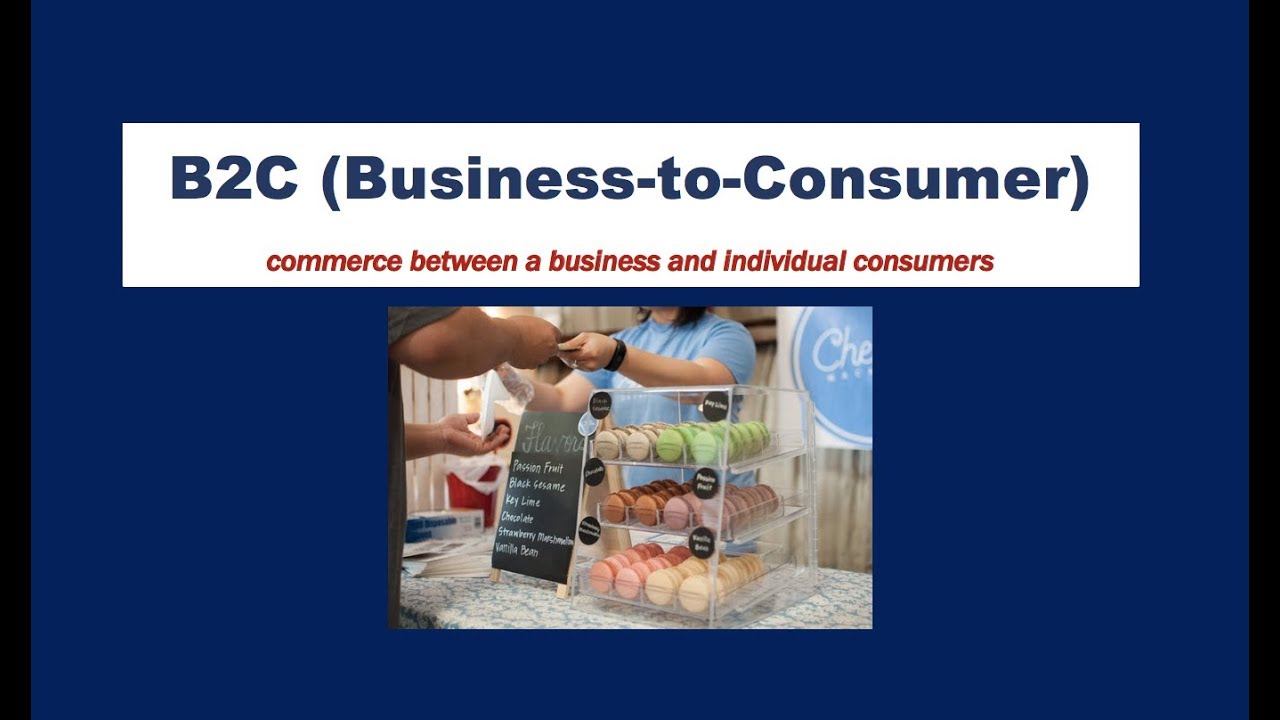
What is B2C Business to Consumer?
Advantages Of B2C Marketing
Manufacturers can avoid pricing markups on their products by selling directly to clients, especially in the digital arena.
Some businesses can also offer items or services on-demand, which significantly decreases expenses.
Websites can reach a far broader consumer base than storefronts, which is critical for the success of a B2C business.
As a result, B2C marketing has become critical to the success of internet enterprises.
The absence of physical storefronts also eliminates the danger and cost of the property, allowing a firm's assets to be more liquid and substantially improving the ease with which the company may adopt and develop.
The Features Of B2C Marketing
B2C marketing can be distinguished by a number of distinguishing characteristics. Take a look at the image below.
- A short sales cycle. In contrast to B2B marketing, where the sales cycle is significantly longer, B2C clients do not spend hours researching, deliberating, and comparing every single feature. B2C consumers typically purchase items recommended by their peers, making the entire process less frightening for both clients and sellers.
- Domination of an emotional element over the rational one. Customers in the B2C sector seek immediate answers to their problems based on their desires. They seldom consider the purchase in a strategic manner. They simply want a quick answer that will meet their immediate demands. So, if a company can give people this answer, they will undoubtedly return for a similar emotional experience.
- Working with the end-user. B2C businesses often deal directly with their customers. This makes it simpler to persuade someone, discover the perfect words, and employ specific tactics. In business-to-business sales, a salesman must engage with many influencerswho make choices on behalf of the whole organization.
- The high importance of social media. Working with end-users nowadays is difficult without engaging in social media marketing. People frantically seek consumer feedback while purchasing a product. To make the best selection, they explore every channel they are aware of. They not only seek reviews but also want to communicate with brands via chatbots on Facebook and Instagram. You'll be hard-pressed to locate someone who will contact or visit the company's headquarters. As a result, companies use chatbots to give clients 24/7 assistance, gather feedback, communicate updates, and execute retargeting efforts to attract new consumers and retain connections with existing ones.
The Difference Between B2B And B2C
Business-to-consumer (B2C) models differ from business-to-business (B2B) models. Businesses buy items for their own use, whereas consumers buy products for their own use.
Large expenditures, such as capital equipment, usually need clearance from the company's executives. As a result, a company's purchasing power is far more sophisticated than that of the typical consumer.
Pricing structures in the B2B business model differ from those in the B2C business model. When it comes to B2C, customers frequently pay the same price for the same items. Prices, however, are not always the same. In reality, firms frequently bargain about pricing and payment conditions.
B2C Marketing Channels
B2C marketing has been around for a long time and relies on a variety of communication methods to reach the end-user. Growth in technology, like other forms of marketing, has expanded the number of marketing channels in B2C.
The following are the most significant channels for B2C marketers:
Email Marketing
Email marketingis a popular and efficient technique for consumer companies to contact their target demographic and improve sales. It generally entails delivering email blasts or tailored promotional emails to new leads or returning clients. Email marketing, on the other hand, is only effective if it is relevant to the receivers.
Mobile Marketing
It is believed that more than half of all online buyers make purchases using their mobile devices. As a result, effective B2C businesses should focus on attracting mobile users via interactive and mobile-optimized promotions. The goal of mobile marketing is to contact mobile people via websites, applications, SMS, MMS, and social media.
Web Push Marketing
When clients visit a website, push notifications are used to convey messages about sales, discounts, or offers to them in real-time. Push notifications are often shown on users' desktops or mobile devices and aid in eliciting a quick response from the viewer.
Social Media Marketing (SMM)
SMM is the use of social media networks such as Facebook, Instagram, and Twitter to advertise products or services to clients directly. It includes developing and disseminating marketing contentusing social media channels. Typically, B2C companies utilize social media to advertise their brands to potential target consumers, loyal clients, and the broader public.
SEO
Search Engine Optimization(SEO) is a natural or organic marketing strategy that involves boosting the visibility of a website or webpage in a search engine's non-paid results. Good SEOstrategies and tools assist businesses in driving more visitors to their websites and, as a result, increasing revenues.
Paid Search Advertising
This is a sort of pay-per-click advertising in which companies pay to have their digital adverts show on the results page of a search engine such as Google or Yahoo. The placement and frequency of these advertisements are determined by one's quality score and bid.
5 Business Models
There are typically five business models in online business-to-consumer sales.
Direct Sellers
This is the sort that most people are familiar with; they are online retail sites where customers may buy items. They can be large corporations like Gap or Dell, or tiny enterprises that develop and sell items, but they can also be online versions of department stores that sell products from a variety of brands and manufacturers. Target.com, Macys.com, and Zappos.com are a few examples.
Online Intermediaries
These "middlemen" connect consumers and sellers without owning the goods or services. Expedia and Trivago are two examples of online travel sites, as is the arts and crafts shop Etsy.
Advertising-Based
This strategy makes use of huge amounts of online traffic to sell advertising, which in turn offers items or services to the customer. This strategy attracts site users with high-quality free content, who subsequently face online advertisements. Examples include the Huffington Post and Observer.com, which do not have a paid subscription component.
Community-Based
This strategy employs online communities based on common interests to assist marketers in marketing their products directly to site visitors. It might be an online forum for photographers, diabetics, or marching band members.
The most well-known example is Facebook, which allows advertisers to target advertisements to people based on highly specific demographics.
Fee-Based
For access to its content, these direct-to-consumer websites require a subscription fee. They usually include newspapers that provide a small amount of material for free but charge for the majority of it, such as The Wall Street Journal, or entertainment services like Netflix or Hulu.
Businesses that sell directly to consumers should consider how their target clients prefer to browse and buy similar items as they investigate various business-to-consumer choices, whether those options entail in-person or online transactions.
B2C Marketing Strategies
Content Marketing
You've probably heard the phrase "Content is King," which was published on Microsoft's website. Every well-known company engages in content marketing.
This technique assists organizations in generating leads, expanding their target audience, increasing engagement, nurturing leads, increasing sales, and increasing customer loyalty.
Different content forms to aid in achieving these objectives. You may create a blog to generate traffic to your website as well as educate your target audience about your products.
Search Engine Optimization
Now that you're in content marketing, it's time to start thinking about SEO. This approach entails optimizing your website's pages so that they appear high in search engine results pages.
In a nutshell, this is a collection of strategies that allow search engine robots to see your content and help consumers locate it. This is a long-term approach that entails dealing with visitors' search queries, page load speed, and link buildingto your website.
Paid Advertising
This approach is identical to SEO, with the exception that you must pay for it. It includes PPC, Facebook and Instagram advertisements, and retargeting efforts.
All of these advertisements assist to direct visitors who are already interested in your goods to your website. You can pay for views or clicks depending on the ad style.
Email Marketing
With a well-thought-out email marketing plan, you can broaden your reach, cultivate long-term connections with your target audience, raise brand awareness, and improve sales.
To improve performance, combine promotional emails with transactional messages. You may use SendPulse's Automation 360 to automatically send emails prompted by user activities.
Social Media
People spend hours every day on social networking platforms, and they DO use them to make online purchases. They search Facebook for reviews and consumer comments and Instagram for additional behind-the-scenesinformation about businesses.
Furthermore, they are more likely to share material they enjoy with their friends, allowing you to improve both revenue and user engagement.
Furthermore, you may utilize Facebook and Instagram to interact with your audience and determine which adjustments will make your business the ideal pick.
Influencer Marketing
Find the most well-known blogs in your niche. They will assist you in promoting your brand to their large audience in a favorable manner.
If people like utilizing your product, you will reap the advantages of long-term collaboration and dramatically increase revenue. All you need to do is conduct research to discover the proper influencers.
Membership And Rewarding Programs
Your devoted customers enable your brand to thrive. They not only enhance your ROI, but they also bring in new clients, spread the positive word about your business, and may assist you in improving.
Create initiatives to recognize and reward their devotion. Allow them to earn points that may be used for a product or a discount.
What Is An Example Of B2C?
Traditional B2C examples include large stores such as Walmart and Target. In terms of e-commerce, there is no greater example than Amazon. The shop is totally electronic, and Amazon serves more customers on a daily basis than any other company.
Which One Is The Biggest Example Of B2C?
Amazon. Amazon is the world's largest eCommercesite, as well as one of the world's four largest technology firms. Amazon's own goods, Amazon Prime, and Amazon Originals (Amazon-funded media) are all excellent instances of the business's B2C character.
How Many B2C Companies Are There?
In the United States alone, there are already over 100,000 B2C eCommerce firms.
How Big Is The B2C Market?
In 2020, the worldwide B2C e-commerce industry was estimated to be worth USD 3.67 trillion. From 2021 to 2028, it is anticipated to increase at a compound annual growth rate (CAGR) of 9.7 percent.
Rising disposable income, worldwide per capita income, and growing internet penetration can all be linked to the growth.
What Does Cross Border E-Commerce Do?
What exactly is international e-commerce? Simply defined, it is the sale and purchase of items across national borders via online stores, when the vendor and customer are located in separate countries. Business-to-business (B2B) and business-to-consumer (B2C) e-commerce are the two types of cross-border e-commerce (B2C).
